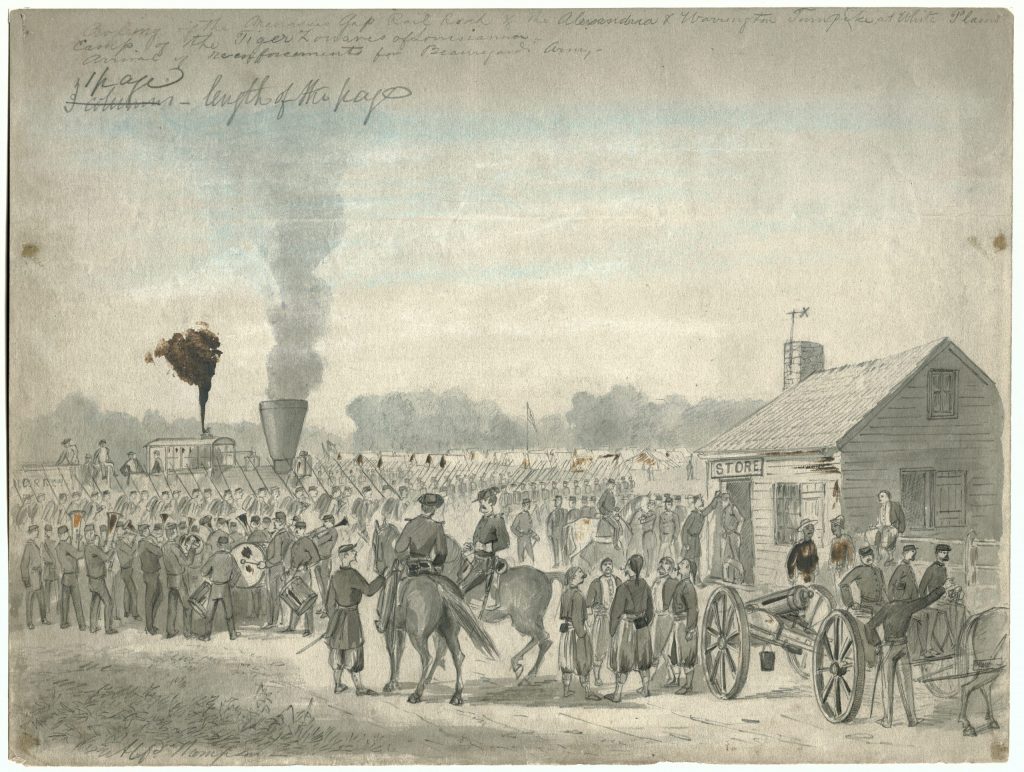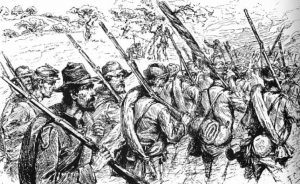Marching to Manassas
Twice in thirteen months, soldiers led by Thomas J. “Stonewall” Jackson pulled off long marches during a campaign that culminated in battle along the banks of Bull Run. Both marches were remarkable in the distance they covered and the time in which the distance was traveled. They also reveal the technological advantages of using railroads to bring together troops from great distances apart.

On July 18, 1861, Jackson’s brigade led the Army of the Shenandoah out of Winchester. The army’s destination was Piedmont Station, where the troops would board trains and take the Manassas Gap Railroad to Manassas Junction. Jackson’s men left Winchester at noon on July 18 and reached their terminus at Manassas Junction in the early afternoon of the next day. All told, in 25 hours, Jackson’s men covered 57 miles–23 on foot and 34 by train.
During the Second Manassas Campaign, Jackson led 24,000 men on a march around Maj. Gen. John Pope’s Army of Virginia. This time, their destination was Bristoe Station, approximately four miles away from Manassas Junction. In this march, Jackson’s foot cavalry marched 54 miles in 36 hours.

Both movements had far-reaching implications that helped determine the outcome of each campaign. They also underscore how effectively railroads could be used to move large bodies of troops. In July 1861, aided by the railroad, Jackson’s brigade moved at a rate of 2.28 miles per hour. In August 1862, using only their legs, the men of Jackson’s command traveled at 1.50 miles per hour. The difference of 0.78 miles per hour may not seem like much, but in July 1861, the movement of Jackson’s brigade and the rest of the Army of the Shenandoah had to be quick, and the railroad sped up the arrival of those Confederates at Manassas Junction in time to participate in the Battle of First Manassas.
Great points about the speed of marches, and the enlightened use of railroads. But I was equally interested in your first sketch, by Alfred Wordsworth Thompson. The sketch resembled the work of Civil War sketch artist Henry Mosler of Cincinnati, and I’d never before heard of Thompson (sketching for the Rebels.) More of Thompson’s work can be found on Google, via “Alfred Wordsworth Thompson Virginia” and select “images.”
Cheers
Mike Maxwell
Excellent post. For all the fragility and incompleteness of their system, the rebels made numerous significant troop transfers by rail in the course of the war.